Opinion
Save Parakrama Samudraya!

By Bandula Kendaragama, Dam Safety Consultant, Melbourne, Australia
This article is written based on information collated through consultations that were submitted as a technical report recently to President Gotabaya Rajapaksa and other relevant government authorities. The consultations were among those who had been interested in dam safety and directly involved in managing the “Narrowly-Missed” breach and in the reconstruction of the Parakrama Samudraya bund after the Cyclone in 1978. They considered it appropriate in sharing concerns and acquired knowledge with the public at this crucial juncture of decision-making on the safety of the aging irrigation infrastructures in Sri Lanka.
The Parakrama Samudraya Reservoir was built by King Parakramabahu the Great, during his reign (1153-1186 AD) and it has a reservoir capacity of 116,000 acre-feet, feeding approximately 25,000 acres of paddy cultivation. This reservoir has a bund 52 feet high and 10 miles long.
The study on the Parakrama Samudraya bund was undertaken owing to information and misinformation that had been widely shared and debated in the formal media, and especially in the social media, concerning the Parakrama Samudraya bund being proposed as a site to construct an 8-feet wide walking path. Further, it is noted that similar walking paths will be constructed on bunds of other reservoirs such as Kantale, Udukirala Wewa, etc.,
Cyclone in 1978
The 1978 Cyclone started with the onset of the storm formed on 20 November 1978 over the southwest Bay of Bengal. It intensified gradually, reaching Super Cyclonic Storm Status Category 4 Cyclone on 23 November with a gusty wind speed of 220 kmph. The 1978 Cyclone was the second strongest Super Cyclonic Storm to strike Sri Lanka’s Eastern Province since modern records began. The cyclone attained peak intensity on November 23, before making landfall in Batticaloa. The Eastern Province was heavily affected by the cyclone.
The cyclone had devastating impacts in Sri Lanka, killing about 915 people and an unaccounted number of cattle and other animals. An estimated more than one million people were affected, with over 250,000 buildings damaged, and one-fifth of Batticaloa’s fishing fleet destroyed. Nine of the 11 paddy stores were destroyed and 90 % of the coconut plantation (about 28,000 acres) in the Batticaloa district were destroyed. Also, in Polonnaruwa District, the public and private infrastructure, paddy, and rice stored in Food Commissioners and Cooperatives, coconut cultivation, etc., were devastated.
Cyclone 1978 and Parakrama Samudraya
The Cyclone reached the Parakrama Samudraya bund at about 6:30 pm on 23 November and lasted till about 4:00 am on 24 November. According to eyewitnesses, the height of the waves was 10 to 12 feet. Knowing the imminent catastrophic danger of overtopping leading to a breach of the bund, the Irrigation Engineer in charge of Polonnaruwa A. D. S. Gunawardana, the Government Agent Polonnaruwa Austin Fernando, and a few other officials, on duty, decided to be ready with a few bulldozers and retain them standby at strategic locations such as at the sluice and spillway, to breach the bund at these locations if the need arises.
The idea behind this decision was if the predicted overnight rainfall occurred and the anticipated inflow to the Parakrama Samudraya did really eventuate, the inflow would have been greater than the outflow with all 10 radial gates and the sluice gates kept open. Then there was a risk of overtopping and breaching the bund. Hence, an artificially introduced breach of the bund to discharge floods along the existing channels would prevent a haphazard catastrophic breach at an unknown and unwanted location, which could inundate the heavily populated downstream areas. Such an emergency rapid drawdown is the standard practice to prevent a dam breach. Fortunately, predicted overnight rainfall was low. However, the drawdown of the reservoir continued overnight.
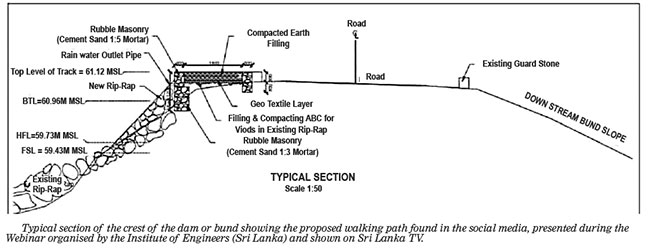
Following the overnight drawdown, about 2/3 of the 12-feet wide bund top road and a fair portion of the upstream shoulder were found to be slipped into the reservoir, leaving only about 1/3 of the bund top road intact. There were widespread such slips along the full length of the bund. The damaged areas were repaired with earthfill and Ralapanawa reinstated as a short-term risk reduction measure. The upstream face of the Ralapanawa was not flattened to improve the safety margin (i.e., Factor of Safety) of the bund in case of future similar drawdowns as it was a long-term risk reduction measure to be implemented by the Government Authorities. Therefore, consideration should be given to implementing appropriate long-term risk reduction measures.
Walking Track Proposal
Based on information available to date, the proposed walking path will be constructed on the upstream side of the bitumen surfaced bund top road where there was a sliding failure during the 1978 cyclone and floods (See Figure above 1).
Several long tension cracks, sealed with tar, are present on the bitumen surfaced bund top road as seen in videos of Sri Lanka media. Most of them are located along (parallel) the bund top road, thus increasing the risk of sliding failures similar to those that occurred during the 1978 floods. Additional loads due to the construction of a walking path would widen and deepen those tension cracks, compromising the safety of the bund, which is not known.
Therefore, it is the considered view that additional loading on top of the 1978 sliding mass for construction of the walking path would increase the risk of reactivating the 1978 slides during a future rapid drawdown, similar to in 1978.
It is understood and appreciated that the Irrigation Department is currently undertaking geotechnical investigations to assess the safety margin of the bund.
The highest concern is dam-safety
Based on information available, it is understood that there is a period of 741-years (i.e., from 1159 to 1900), where the performance of the bund is not documented and unknown. However, it is reported that the bund was totally breached during the colonial era. According to R L Brohier, the bund and the reservoir were abandoned for more than a century.
Given that the population at risk in case of a dam break is extremely high, it appears that the consequence category of this bund is “Extreme” as per the current international dam safety guidelines. Therefore, the proposed walking path at Parakrama Samudraya cannot be compared to that of the Kurunegala Wewa, Boralesgamuwa Lake, etc., constructed along the reservoir rim, and the walking paths constructed around water bodies in the suburbs of Colombo.
It is understood that the Parakrama Samudraya is formed by combining three reservoirs of unknown history. Therefore, the bund may have been raised in several stages during the 741-years associated with unknown performance. It is not known whether dam safety-related defects of the bund such as slips or slides, cracks, animal burrows, sinkholes, soft areas, root bowls, zones of desiccation cracking, zones of residual shear strength because of historical failures, etc., were repaired to satisfactory standards, or not.
The aging of dams constructed of earth and rockfill material is due to time-related changes in the properties of the materials of the structure and its foundation. As reported in a technical paper published in May 2010 by the United States Society of Dams, the aging or deterioration of embankment dams and their foundations are of concern. These concerns extend throughout the entire life of the dam until safe abandonment or demolition.
Recent interventions on dam-safety
Given the dam safety issues associated with this controversial walking path project, the Water Forum of the Institute of Engineers in Sri Lanka conducted a Webinar on 09 September 2021 on “Usage of Inland Water Bodies for Recreation”. More than 280 personnel, mainly engineers, participated in this Webinar and raised over 100 questions related to the safety of the bund. Several questions were raised on fundamental errors and potential failure modes associated with the proposed walking path. It appears that ad hoc decisions have been taken for reasons unknown. The lack of laws and dam safety regulations in Sri Lanka could be one of the reasons for such ad hoc decisions taken by various individuals and organisations.
As far as dam safety regulations are concerned, India is well ahead of Sri Lanka. Even Ghana in Africa has introduced Dam Safety Regulations to ensure the safe design, construction, operation, and maintenance as well as decommissioning of dams.
Based on statistics of embankment dam failures and accidents, 48% of dam failures are related to overtopping and failures of appurtenant structures, and 46.5% are due to internal erosion. Due to the absence of an internal filter system in this bund, not only the slope instability, but the internal erosion is also likely to be a prominent potential failure mode.
It is understood that planning is underway to construct several fast-food outlets, toilet facilities (including a “changing room”) at the toe of the bund, i.e., within the reservation area of the bund located immediately downstream of it. It is to be stressed that this stretch of land along the bund is a critical area to ensure the safety of the bund. Identification of dam safety features such as heaving the ground, cracks, wet areas, springs, seepage locations, etc., in this area, is critical. Digging of lavatory pits, trenches, etc., could intercept permeable layers in the foundation and may trigger “backward erosion tunnels” leading to piping, which is a major failure mode in embankment dams (or, bunds). Excavations in this area could lead to sides of the downstream face of the bund, compromising its safety margin.
Should there be a need to improve the safety margin of the bund, additional stabilizing fills are to be constructed in this area over the downstream face of the existing bund. An access road along the downstream toe of the bund is an essential item for repairs and routine maintenance of the bund. Given the proximity to the dam, this reservation area should be used to stockpile materials to be used during dam emergencies such as filter sand, crushed rock, rockfill, etc., and movement of construction machinery for maintenance and repairs. This area is an integral part of the bund, hence should not be used for either permanent or temporary constructions. Therefore, consideration should be given to providing these facilities at an alternate suitable location, perhaps close to the Government Agent’s residence, or thereabouts.
Recommendations to maintain dam safety
Based on dam safety concerns and consequences discussed, it is recommended that,
1) the crest of the bund is reserved for routine maintenance, including replacement of displaced Ralapanawa if necessary, placement of additional boulders if required, and for construction of temporary overtopping protection bund using ‘Sandbags”, as and when required.
2) the stretch between the Ralapanawa and bitumen road be reserved for the construction of a wave wall to meet the dam safety requirements of future hydrological reviews to be undertaken during the service life of the reservoir and bund.
3) a safe “Load Capacity” be imposed on the bund top road, and arrangements are made to stop all heavy trucks plying on the bund top road as the bund has not been designed for such traffic loads.
4) the bund top road is completely closed for all traffic, say from 5:30 am to 7:30 am and then from 6:00 pm to 9:00 pm or as agreed by local authorities, in the preferred 2km long stretch, and then the existing bitumen surfaced bund top road to be used as the walking path (Alternatively, only the upstream-half of the bitumen surfaced bund top road to be used as the walking path while the downstream-half of the bitumen surfaced bund top road to be kept open for one-way light traffic only, subject to nominated maximum speed to ensure the safety of people using the walking path).
5) an alternative walking path (For example, in the reservoir rim), be investigated which will not compromise the safety of the dam.
6) the reservation area located immediately downstream of the bund is not used for developments that are been planned by the Urban Development Authority as this area is very sensitive to dam safety issues.
7) the reservation area located immediately downstream of the bund, which is an integral component of the dam, be a property of the Irrigation Department for inspection and monitoring of critical dam safety features, construction of a toe access road, construction of stabilizing fills if required, stockpiling of construction materials required during dam emergencies, etc.,
8) a potential failure modes analysis and Risk Assessment be undertaken in accordance with international dam safety standards.
9) a Design and Safety Review of the dam and appurtenant structures be undertaken in accordance with the international dam safety standards incorporating review of geotechnical parameters of the bund and foundation, hydrology, wave run-up, seismicity, flood handling capacity, reliability of gates and instrumentation, etc.,
10) sufficient funds must be allocated to undertake Design and Safety Reviews of all “Extreme” consequence category dams in Sri Lanka.
11) sufficient funds must be allocated to routine maintenance of dams (Note: Depending on their nature, some maintenance items, if not addressed in a systematic and timely manner, may eventually become dam safety issues, eventually leading to failure of dams).
12) early arrangements must be made to implement the recommendations of the Cabinet Memorandum No. 11-2020 dated 26 October 2020 on the Establishment of a Dam Safety Consultation Centre and a Dam Safety Regulatory Mechanism.
(The author can be contacted on email: bandula.kendaragama@gmail.com)
Opinion
Learning from global models to address flooding and water shortage in Sri Lanka

by Sudharman Siripala
Sri Lanka is grappling with the increasing threat of climate change, which has led to unpredictable weather patterns. The country faces a dangerous combination of flooding in some regions and water shortages in others, a situation exacerbated by shifting rainfall patterns. Rivers originating in the Central Hills, such as the Mahaweli, Kalu, and Kelani, flow through much of the country, but these water sources are not being distributed evenly. Districts like Monaragala and Hambantota, located in the dry zone, are experiencing severe water shortages. To address this challenge, experts suggest the development of an interconnected river system to harness excess water during floods and redirect it to drier areas, ensuring a year-round water supply for agriculture and daily use.
Global Case Studies in River Management
Several countries facing similar water-related challenges have implemented successful water management systems that Sri Lanka could adapt to its unique circumstances:
The Netherlands – Room for the River Programme
The Netherlands, a country prone to flooding, widened its rivers and relocated dikes to create floodplains. This approach allows rivers to overflow without damaging urban areas, while preserving water flow and natural habitats. Sri Lanka could apply this concept by designating specific riverbank areas for temporary flood storage.
China – South-North Water Transfer Project
China’s massive project channels excess water from the flood-prone Yangtze River to drier northern regions. This system of canals and reservoirs could inspire Sri Lanka to divert water from rivers in the Central Hills to drier areas in the south and east.
Bangladesh – River Interlinking Projects
Bangladesh has implemented river interlinking projects to redistribute water from flood-prone rivers, such as the Brahmaputra, to drier regions. Sri Lanka could link its major rivers like the Mahaweli and Kelani to smaller rivers in water-scarce districts to balance water distribution.
India – National River Linking Project
India’s National River Linking Project connects major rivers to manage both floods and droughts. Sri Lanka could use similar strategies, connecting rivers around the 500-foot contour line in the Central Hills to help distribute water more effectively.
United States – Mississippi River and Tributaries Project
The Mississippi River system combines levees, floodways, and diversion channels to manage flooding. Sri Lanka could adopt similar flood-control measures in vulnerable river basins such as the Kelani and Kalu.
Japan – Underground Reservoirs and Flood Channels
Japan’s G-Cans Project in Tokyo channels excess water into underground reservoirs to prevent urban flooding. A similar underground system could be implemented in Colombo and other flood-prone cities in Sri Lanka.
Singapore – Marina Barrage
Singapore’s Marina Barrage serves as both a flood control measure and a water supply resource. Sri Lanka could develop similar systems to control flooding in urban areas and ensure water availability during dry spells.
Thailand – Chao Phraya River Basin Management
Thailand uses diversion channels in the Chao Phraya River Basin to prevent flooding in Bangkok and direct water to agricultural areas. Sri Lanka could replicate this by creating diversion channels to supply water to its agricultural zones.
Actionable Solutions for Sri Lanka
Develop an Interconnected River System
Establish water diversion channels along the 300-500 meter contour lines of the Central Hills to capture excess rainfall during floods and redirect it to drier areas.
Build Reservoirs and Storage Tanks
Construct reservoirs to store diverted water, ensuring a steady supply for agriculture and domestic use. Sri Lanka has around 14,000 ancient tanks out of 30,000 that could be revitalized for this purpose.
Improve Urban Flood Defenses
Drawing inspiration from Japan and Singapore, build underground reservoirs and flood channels in cities like Colombo to mitigate urban flooding.
Strengthen Watershed Management
Restore natural floodplains and create wetlands to absorb excess rainwater, as seen in the Netherlands, helping to reduce flood risks.
Encourage Public-Private Partnerships
Foster collaboration between the public and private sectors to fund large-scale water management infrastructure, leveraging models from China and the United States.
Leverage Technology
Utilise modern forecasting and real-time water management systems, similar to those in Bangladesh and Thailand, to monitor water levels and manage river flows dynamically.
International Collaboration
Form partnerships with countries that have successfully implemented flood control and water management systems to share expertise and technology.
Sri Lanka’s dual challenges of flooding and water scarcity, compounded by climate change, require immediate action. By developing an interconnected river system and learning from successful global water management models, Sri Lanka can mitigate the effects of floods while ensuring a sustainable water supply for agriculture and daily life. It is crucial for the country to act now, as these solutions have the potential to transform Sri Lanka’s water management system for the better.
Sudharman Siripala Managing Director of Geoinformatics Group and a Registered Licensed Surveyor, specializes in geo-spatial applications. He also serves as a freelance value chain consultant for Vivonta Green Tech Consultants (www.vivonta.lk)
Opinion
Doctor’s plight

Some people have found fault with a female doctor for not coming forward to identify her rapist and help make him pay for his crime.
Do they not realise the emotional toll of facing her rapist again?
There should be a way for survivors to testify directly to the judge without enduring such distressing encounters. Making a victim relive her trauma in this manner is akin to subjecting her to the ordeal all over again.
A Ratnayake
Opinion
Developing attitudes of schoolchildren for development
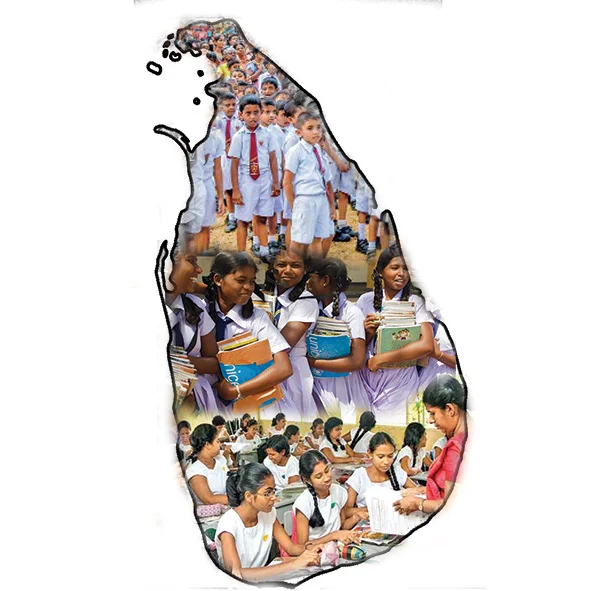
Sri Lanka was once at an economically comparable level with some of the world’s most developed countries in the 19th century. However, despite our country’s potential, we are still striving to fully develop. Many people often blame politicians, government officers, or various sectors for the situation. However, I believe the root cause of these issues lies not in any individual or group, but in the lack of good attitudes within our society.
We are investing significant resources into our education system, which is funded by the taxes of hard- working citizens. However, when we examine the outcomes, we realise that the academic achievements of our graduates alone are not enough. There are instances where professionals, despite having the necessary qualifications, fail to uphold ethical standards. In some cases, this even results in malpractice or harmful actions that damage our country’s reputation and progress. This highlights the gap between academic success and real-world responsibilities.
The education system, which is currently focused on competitive exams and rote learning, does not emphasise the development of attitudes and character in students. While our students are academically capable, many lack the qualities required to contribute positively to society. This lack of focus on social values, such as patriotism, selflessness and respect for elders, is holding us back from achieving the level of progress we deserve.
To address these concerns, I wrote to His Excellency, the President of Sri Lanka, on 24th September 2024, proposing education reforms that emphasise not only academic qualifications but also attitudes, ethics, and social responsibility. I suggested a holistic approach to university admissions and government recruitment, incorporating moral integrity, character, and extracurricular involvement, key traits for fostering well- rounded, responsible citizens. More importantly, I strongly recommended introducing a compulsory school subject, with both theory and practical components, focused on attitude development, which would be evaluated in university admissions. Encouraging extracurricular participation alongside academics will help shape ethical and socially responsible individuals.
I am pleased to inform you that the President, recognising the importance of these reforms, has directed the relevant ministries (by a letter dated 24th October 2024) to explore integrating these ideas into the education system. This marks a crucial step in transforming the values and attitudes of our youth for the nation’s benefit.
However, meaningful change requires collective effort. Parents, teachers, students, and citizens all play a role in shaping Sri Lanka’s future. Together, we must instill responsibility, ethics, and patriotism in the next generation. I invite you to share your thoughts and suggestions on further enhancing the values and attitudes of our youth. Your feedback will be invaluable in building a brighter future for Sri Lanka, one driven not just by knowledge, but by integrity and character.
Dr. Mahesh Premarathna
Research Fellow, National Institute of Fundamental Studies, Sri Lanka Email: mahesh.pr@nifs.ac.lk
-

 News6 days ago
News6 days agoSeniors welcome three percent increase in deposit rates
-

 Features6 days ago
Features6 days agoThe US, Israel, Palestine, and Mahmoud Khalil
-
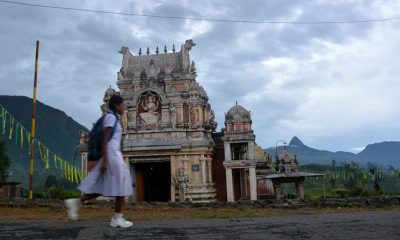
 News6 days ago
News6 days agoScholarships for children of estate workers now open
-
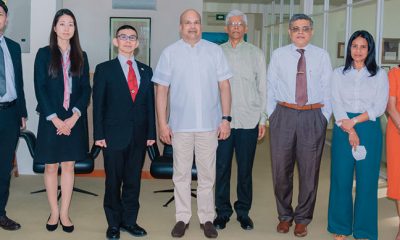
 News7 days ago
News7 days agoDefence Ministry of Japan Delegation visits Pathfinder Foundation
-

 Foreign News4 days ago
Foreign News4 days agoBuddhism’s holiest site erupts in protests over Hindu ‘control’ of shrine
-
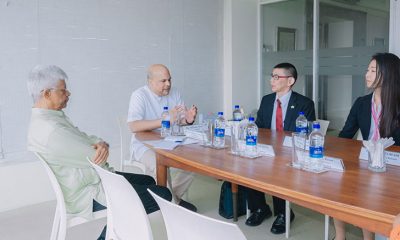
 News6 days ago
News6 days agoJapanese Defence Delegation visits Pathfinder
-

 Editorial7 days ago
Editorial7 days agoWhen promises boomerang
-
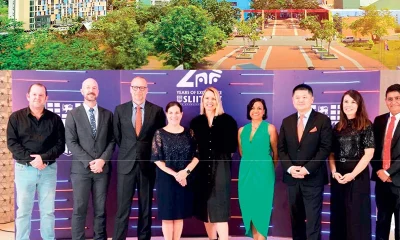
 Features3 days ago
Features3 days agoCelebrating 25 Years of Excellence: The Silver Jubilee of SLIIT – PART I











